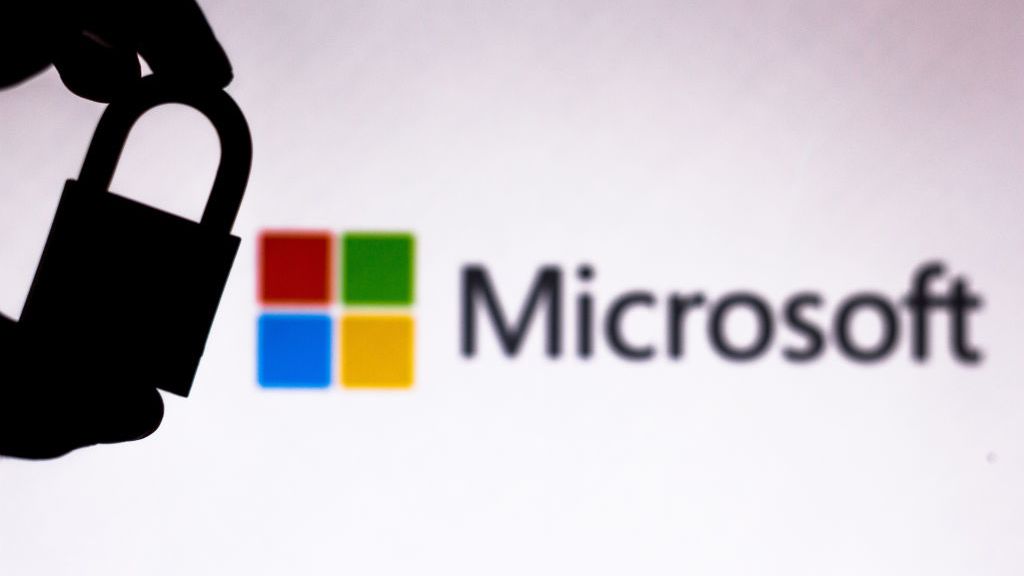Microsoft Defender drops "downpour" of false ransomware alerts on customers
System administrators made numerous reports of false-positive results being flagged for seemingly innocuous files and behaviours on Wednesday


Microsoft has confirmed that a code issue in Microsoft Defender for Endpoint has led to a wave of false-positive ransomware alerts for Microsoft customers.
Some system administrators reported issues on Wednesday afternoon involving numerous ransomware detections in their file systems.
Specifically, the erroneous alerts were titled ‘Ransomware behaviour detected in the file system’ and were triggered on ‘OfficeSvcMgr.exe.’, Microsoft said, with alerts occurring for around two hours between 14:39 - 16:50 (UTC).
It said a recent update that it deployed “within service components that detect ransomware alerts” introduced a code issue that led to false ransomware detections in the company’s security solution.
Microsoft has issued another code update that should correct the problem, according to Microsoft's Steve Sholz, principal technical specialist at Microsoft, updating customers via social media.
Sholz said Microsoft has updated its cloud logic to suppress the false-positive alerts and has re-processed a backlog of alerts to “completely remediate impact”. Affected customers should find the false-positives should clear from their portal without any intervention.
Microsoft is now investigating how the code error slipped through its testing and validation processes, with the hope that it will prevent similar issues from occurring again in the future.
Sign up today and you will receive a free copy of our Future Focus 2025 report - the leading guidance on AI, cybersecurity and other IT challenges as per 700+ senior executives
Microsoft customers reported that the errors began appearing after they updated their security definitions, which led to a “downpour of ransomware alerts” for some.
Microsoft Office files were commonly being flagged as ransomware, according to some reports, while other behaviours like deleting shadow copies also triggered false-positive alerts for some.
Elsewhere, users on Windows 11 have reported numerous problems since installing the March security update, including slow program load times after booting, File Explorer lagging, and a malfunctioning Windows Terminal, among other issues.
RELATED RESOURCE

Modernise your server infrastructure for speed and security
Infrastructure lifecycle automation paves the way for an adaptive, resilient organisation
IT Pro has contacted Microsoft to understand if it’s aware of the issues and what is being done to address them, but it did not immediately reply at the time of publication.
A total of 92 security vulnerabilities were fixed as part of the most recent March update, including a Windows 11 issue that prevented some users from erasing all their files after a system reset.
Microsoft has also been criticised by system administrators this year for releasing ‘broken’ patches that have led numerous organisations to forgo important security fixes out of fear they may cause more disruption than they solve.
Windows Server administrators said January’s security fixes “made the problem worse”, including creating an issue where they were unable to see the Active Directory environment in Microsoft Exchange, for example.

Connor Jones has been at the forefront of global cyber security news coverage for the past few years, breaking developments on major stories such as LockBit’s ransomware attack on Royal Mail International, and many others. He has also made sporadic appearances on the ITPro Podcast discussing topics from home desk setups all the way to hacking systems using prosthetic limbs. He has a master’s degree in Magazine Journalism from the University of Sheffield, and has previously written for the likes of Red Bull Esports and UNILAD tech during his career that started in 2015.
-
 Microsoft CEO Satya Nadella wants an end to the term ‘AI slop’ in 2026
Microsoft CEO Satya Nadella wants an end to the term ‘AI slop’ in 2026News Microsoft CEO Satya Nadella might want the term "AI slop" shelved in 2026, but businesses will still be dealing with increasing output problems and poor returns.
-
 New security features are coming to Microsoft Teams this month
New security features are coming to Microsoft Teams this monthNews From 12 January, weaponizable file type protection, malicious URL detection, and a system for reporting false positives will all be automatically activated.
-
 Cybersecurity experts face 20 years in prison following ransomware campaign
Cybersecurity experts face 20 years in prison following ransomware campaignTwo men used their tech expertise to carry out ALPHV BlackCat ransomware attacks
-
 15-year-old revealed as key player in Scattered LAPSUS$ Hunters
15-year-old revealed as key player in Scattered LAPSUS$ HuntersNews 'Rey' says he's trying to leave Scattered LAPSUS$ Hunters and is prepared to cooperate with law enforcement
-
 The Scattered Lapsus$ Hunters group is targeting Zendesk customers – here’s what you need to know
The Scattered Lapsus$ Hunters group is targeting Zendesk customers – here’s what you need to knowNews The group appears to be infecting support and help-desk personnel with remote access trojans and other forms of malware
-
 Impact of Asahi cyber attack laid bare as company confirms 1.5 million customers exposed
Impact of Asahi cyber attack laid bare as company confirms 1.5 million customers exposedNews No ransom has been paid, said president and group CEO Atsushi Katsuki, and the company is restoring its systems
-
 The US, UK, and Australia just imposed sanctions on a Russian cyber crime group – 'we are exposing their dark networks and going after those responsible'
The US, UK, and Australia just imposed sanctions on a Russian cyber crime group – 'we are exposing their dark networks and going after those responsible'News Media Land offers 'bulletproof' hosting services used for ransomware and DDoS attacks around the world
-
 A notorious ransomware group is spreading fake Microsoft Teams ads to snare victims
A notorious ransomware group is spreading fake Microsoft Teams ads to snare victimsNews The Rhysida ransomware group is leveraging Trusted Signing from Microsoft to lend plausibility to its activities
-
 Volkswagen confirms security ‘incident’ amid ransomware breach claims
Volkswagen confirms security ‘incident’ amid ransomware breach claimsNews Volkswagen has confirmed a security "incident" has occurred, but insists no IT systems have been compromised.
-
 The number of ransomware groups rockets as new, smaller players emerge
The number of ransomware groups rockets as new, smaller players emergeNews The good news is that the number of victims remains steady